Common Steps in Establishing
a Gold Prospect
- Regional Evaluation - Zero in on a likely province based on geology,
mineralogy, and history.
- Identification of specific targets of sub-areas - this implies geologic,
geophysical, and/or geochemical analysis.
- Local Exploration - Once potential areas are identified, one must refine
the definition of the actual area of interest
- Detailed Exploration - Once a localized target, (or targets) have been
identified, more rigorous testing to establish the distribution, grade, and
economic viability of the prospect.
Common Steps in Establishing
a Gold Prospect (continued)
Regional Considerations - Common Geological Settings for Gold Deposits
-
Hydrothermal Veins - formed from hot mineral-rich fluids in country rock.
- Placer Deposits - Gold is eroded from source and transported via streams and
rivers, accumulating and concentrating by gravitational processes.
- Greenstone Belt Deposits - Ancient meta-volcanic/sedimentary sequences
often associated with gold
- Contact Metamorphic Deposits - Gold often is introduced into surrounding
country rock during volcanic activity (Libya?)
There is an old adage known to the exploration community,
Gold is found where you find it
This implies the best place to look for gold is where it either has already been
found, or in places with similar geology to areas where it is know to occur.
Generalized Location of Mineral Resources
Libya
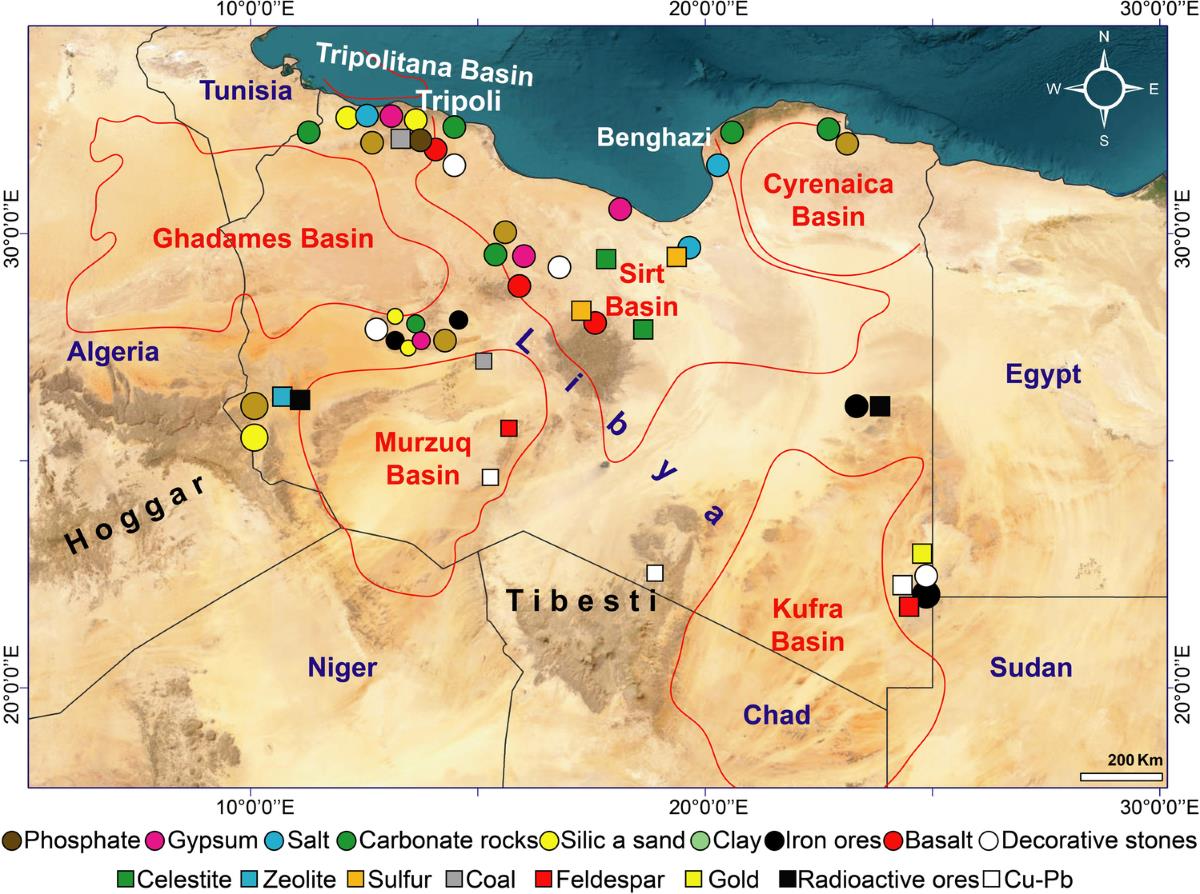
Dhahri et al, 2023 (Springer Nature, Vol 37)
Gold Potential of Libya
Contact metamorphism has been linked to gold potential in Libya.
Specifically metamorphic belts in southern regions, along with kimberlite occurrences in
the Eastern Saharan craton.
Libya has a heterogeneous mixture of igneous, metamorphic, and sedimentary
formations, resulting in the potential for different types of ore deposits, including Contact
Metamorphic gold deposits in Southern Libya Eastern Saharan Craton has kimberlite pipes. While not directly related to gold, this
suggests a deeper (mantle) connection with the potential for other types of
mineralization, including gold.
Exploration Strategy
Gold has been reportedly found near the Al-Samah Oil field.
As shown, Tertiary volcanics are the probable source of mineralization
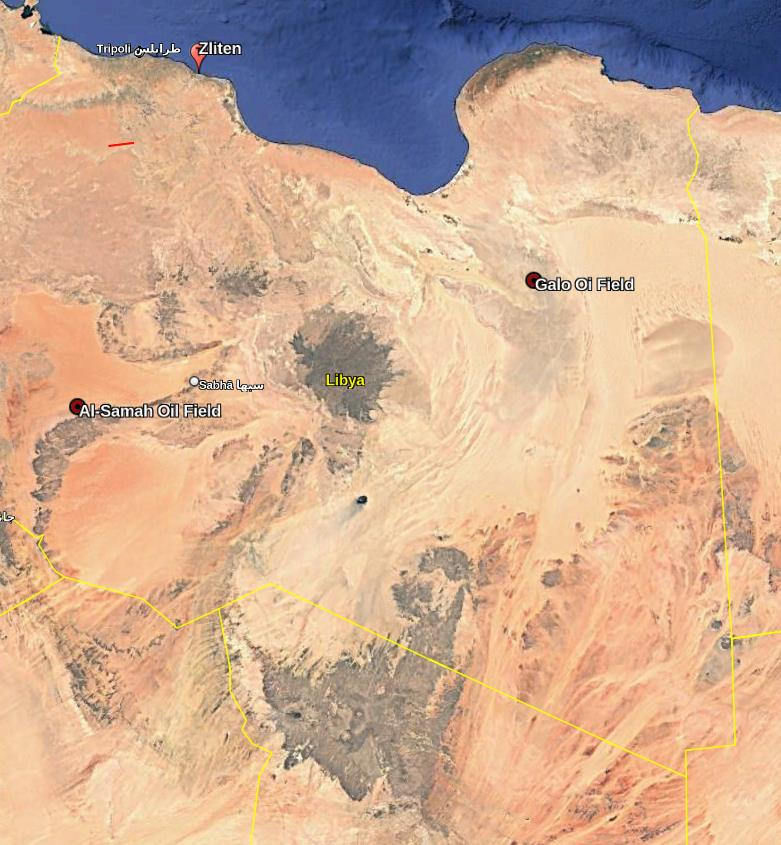
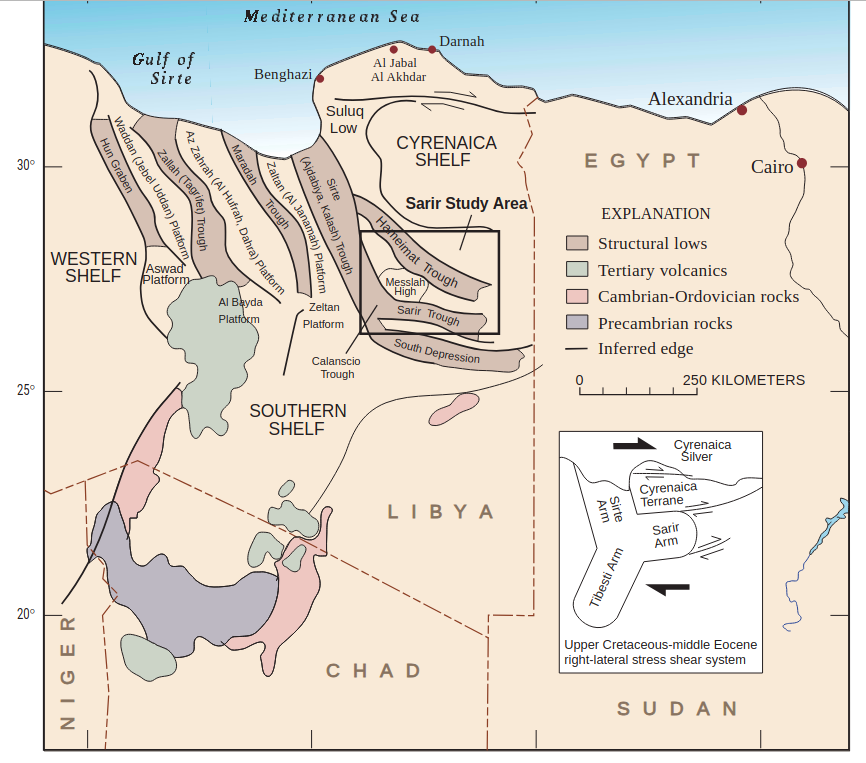
Sample Spacing Assuming 10 Km2
- 100 meter spacing would require 1000 samples
- 200 meter spacing would require 250 samples Optimal for this survey
- 250 meter spacing would require 160 samples
- 300 meter spacing would require 111 samples
- Note coordinates (Lat/Long as decimal degree)
- Log sample and site characteristics
- Collect Sample with a power auger to a depth of 2 meters
- Consolidate (homogenize) sample
- Sub-sample 100 grams of sample for geochemical analysis, (retain
remainder for additional tests).
- Screen samples with purple of Cassius Test
- Assay samples by lithium metaborate Fusion/ ICP
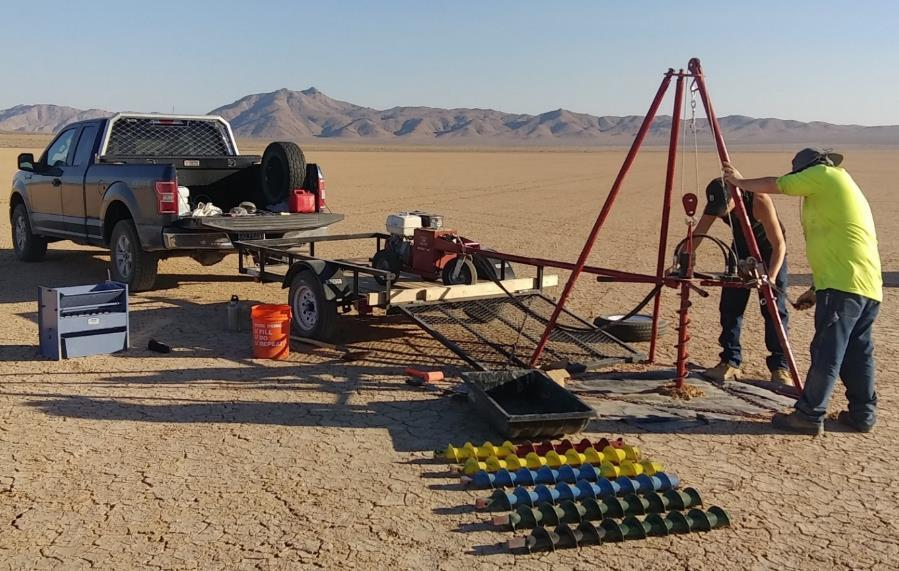
Typical hydraulic auger in operation
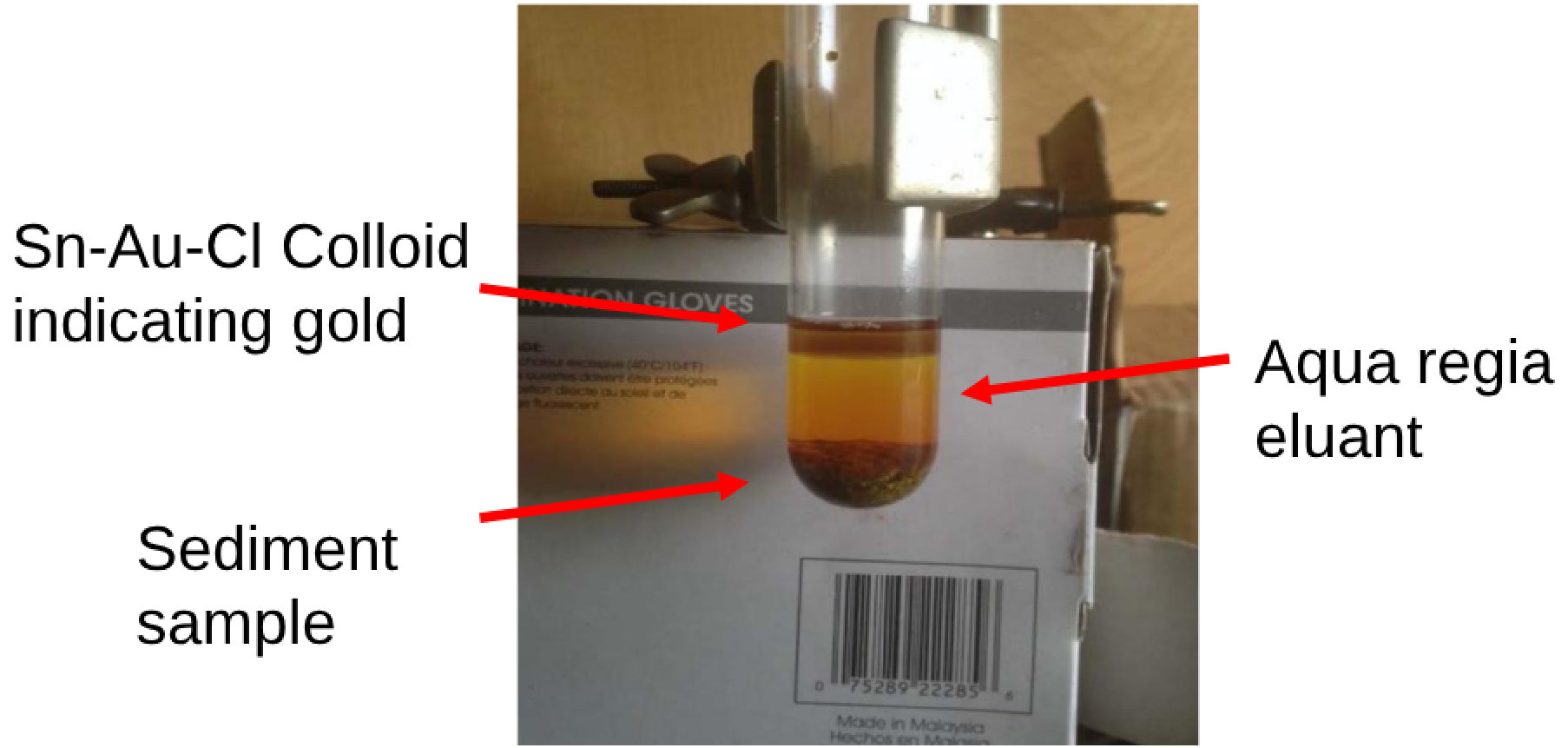
Example of a simple Purple of Cassius test for Gold on a sample from placer sands collected at Box
Creek, Colorado
Apply Kriging interpolation to resulting dataset to estimate measured resource and
gold distribution.
This method estimates values at unknown locations by analyzing the spatial
relationships between known data points. It uses a Variogram to model the spatial
correlation and provides a weighted linear combination of known values to predict
the value at an unsampled location.
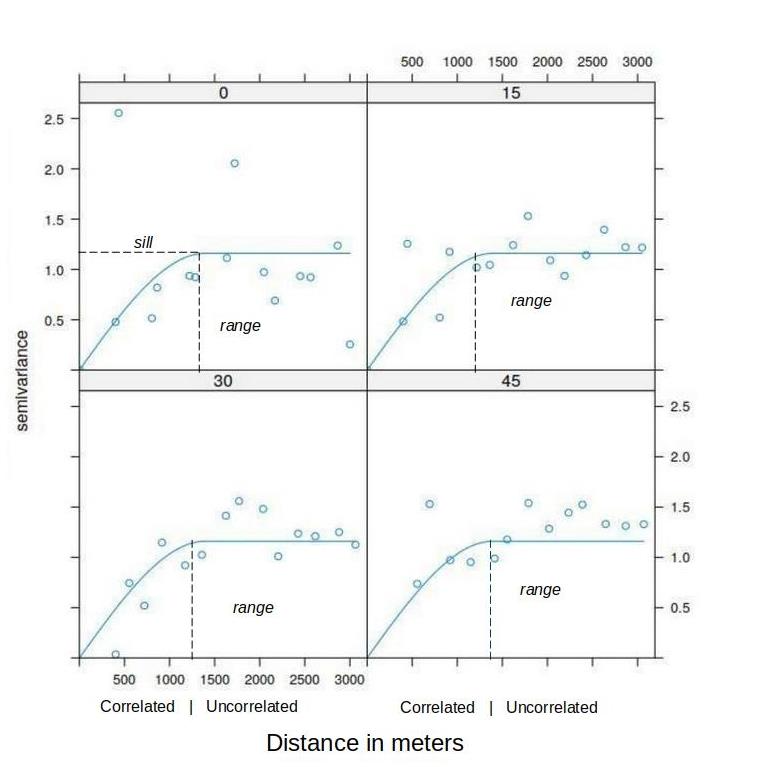
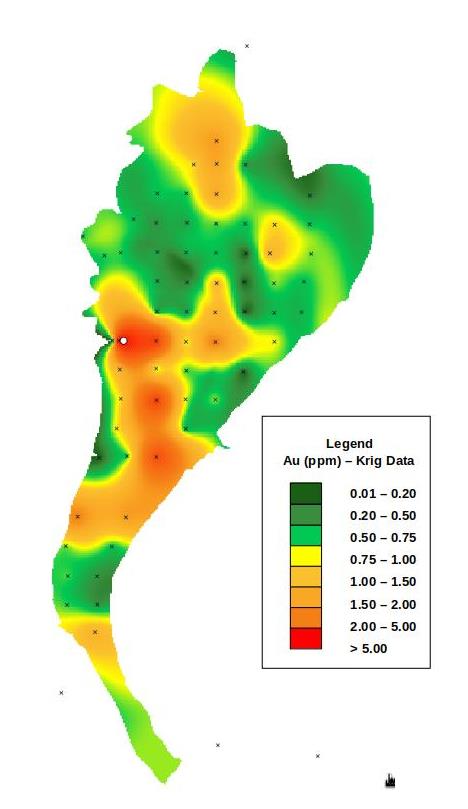
Spherical Model Variogram and Resulting Krig Gold Interpolation from a prospect
in the Mojave Desert.
Processing Options
Once a resource is established, any number of methods can be applied to extract
the gold from the material. Ammonium Thiosulfate can be used in a modified
Merrill-Crowe Leaching system.
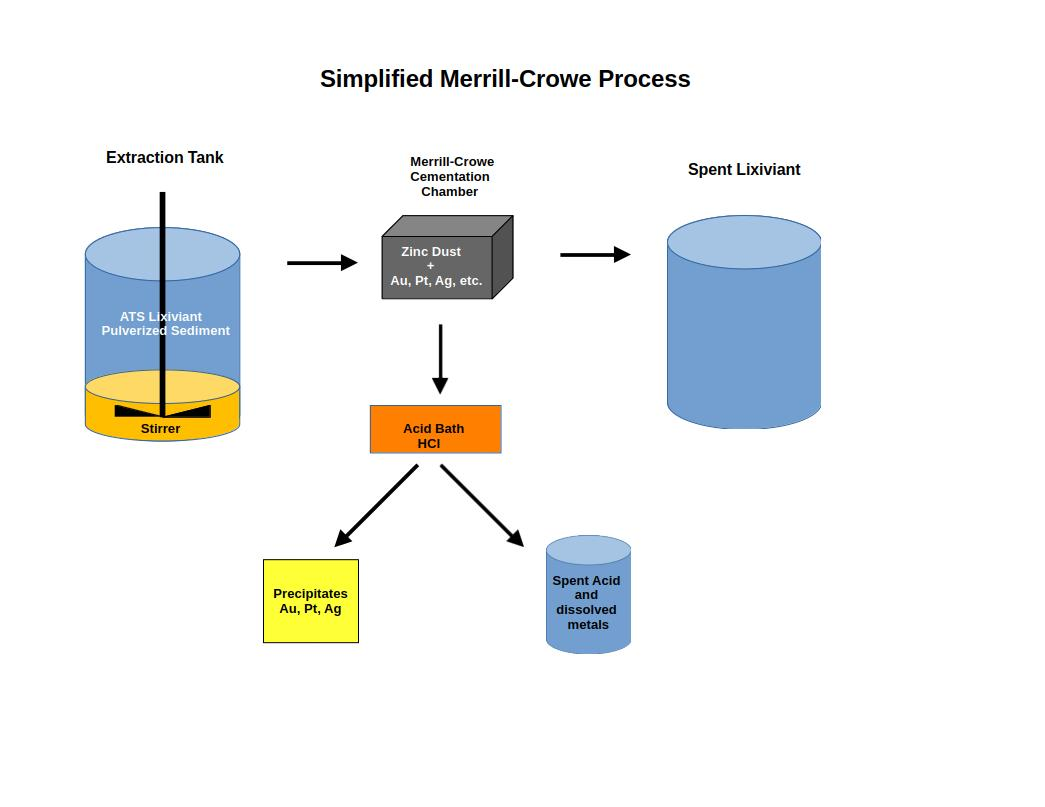
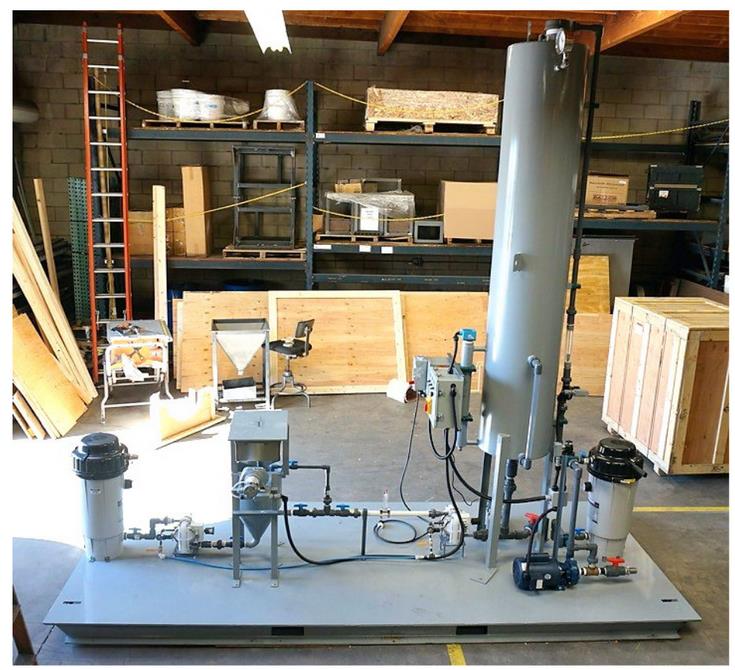
Typical commercial Merrill-Crowe Unit
|